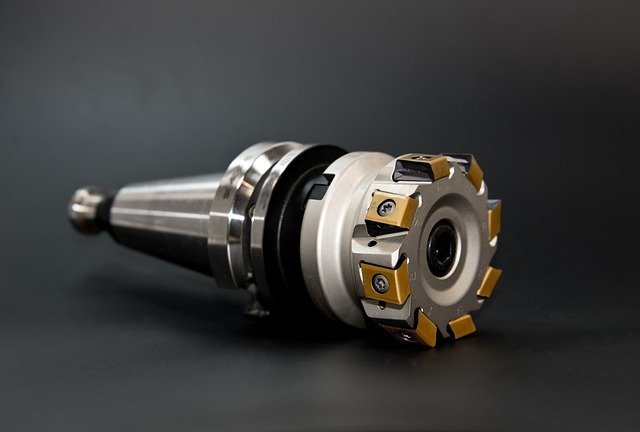Coating choices and their impact on tool life in metalworking
Coating selection is a practical lever for extending tool life and stabilizing process outcomes in metalworking. Understanding how different coatings interact with substrates, cutting parameters and the workpiece can guide decisions on inserts, coolant use and regrind schedules. This article outlines factors that influence coating performance and offers actionable perspectives for machining operations seeking reliable tool performance and improved sustainability.

How do coatings affect machining performance?
Coatings change the surface chemistry and thermal behavior of cutting edges, altering wear mechanisms and friction during machining. Hard ceramic coatings such as titanium nitride (TiN) or aluminum oxide (Al2O3) provide thermal and abrasive resistance, while nanocomposite or multilayer coatings can reduce adhesion and improve toughness. The right coating reduces flank and crater wear, which stabilizes dimensional accuracy and extends the usable life of an insert. Coating selection should reflect the workpiece material and the machining objective—high-speed finishing favors low-friction coatings, whereas interrupted cuts need tougher, more impact-resistant options.
What coating types suit different inserts and substrates?
Inserts are manufactured on substrates that provide bulk toughness and toughness-coating adhesion balance. Common substrates include fine-grain carbides and cermets; the coating must bond well without embrittling the insert. PVD coatings (e.g., TiN, TiAlN) are thinner and maintain sharpness on small radii, whereas CVD coatings (e.g., Al2O3) are thicker and better for high-temperature oxidation resistance. For stainless steels or titanium alloys, coatings that reduce built-up edge and increase thermal insulation are often preferred. Substrate choice, coating thickness and deposition method must be matched to the insert geometry and machining regime.
How do feedrate and toolpath influence tool life?
Feedrate and toolpath directly affect mechanical and thermal loading on the coated edge. Higher feedrates increase chip cross-section and mechanical stress, accelerating flank wear and chipping risk; coatings with greater toughness and adhesion to the substrate perform better under these conditions. Toolpath choices that reduce engagement time, smooth direction changes, and avoid prolonged dwell on a specific edge help extend life. Strategic adjustments to feedrate, cut depth and entry/exit moves can mitigate localized heat buildup and maintain coating integrity, particularly when working with demanding alloys or complex toolpaths in 3D machining.
How does chipcontrol and coolant interact with coatings?
Effective chipcontrol reduces recutting and heat concentration at the cutting edge, which helps preserve the coating. Chipbreaker geometry on inserts and optimized toolpath sequencing promote predictable chip flow, reducing adhesion and abrasive interactions that wear the coating. Coolant selection and application method (flood, through-tool, or mist) also influence coating performance: coolant lowers temperatures and aids chip evacuation, but some coolants can react chemically with certain coatings or reduce the thermal gradient that a coating relies on. Evaluate chipcontrol and coolant as a combined system to prevent premature coating failure and to optimize machinability.
When is regrind appropriate for coated tools?
Regrind decisions depend on coating type and how the coating layer behaves during sharpening. Many coated inserts and brazed tools are not intended for multiple regrinds because coatings are lost or compromised during grinding, exposing the substrate and altering cutting geometry. For indexable inserts, regrind is usually not applicable, but for some solid-carbide or HSS tools with a thin coating, controlled regrinding that restores geometry while maintaining a residual coating can be feasible. Assess the remaining coating thickness, substrate condition and economic trade-offs: regrind may be justified when the substrate retains integrity and dimensional restitution outweighs the cost of a new tool.
How do coatings relate to sustainability in metalworking?
Coatings contribute to sustainability by extending tool life and lowering scrap rates, which reduces material and energy consumption over time. Longer-lasting coatings decrease the frequency of tool changes and the associated downtime, which improves process efficiency and reduces waste from worn parts. However, sustainability assessment should include coating production impacts and the recyclability of coated tools. Selecting coatings that enable lower cutting forces and reduced coolant use—paired with optimized feedrate and toolpath—can deliver measurable environmental benefits. Lifecycle thinking helps balance performance gains with resource considerations.
Conclusion
Coating choices are a multifaceted decision that affects wear behavior, thermal response and operational practices in machining. Matching coating type to substrate, insert geometry and the target material, while considering feedrate, toolpath, chipcontrol and coolant strategy, yields the most reliable tool life improvements. Regrind policies and sustainability objectives add further constraints that should be evaluated alongside performance metrics. Thoughtful integration of coatings into the overall machining system leads to predictable outcomes and more efficient use of tooling resources.





